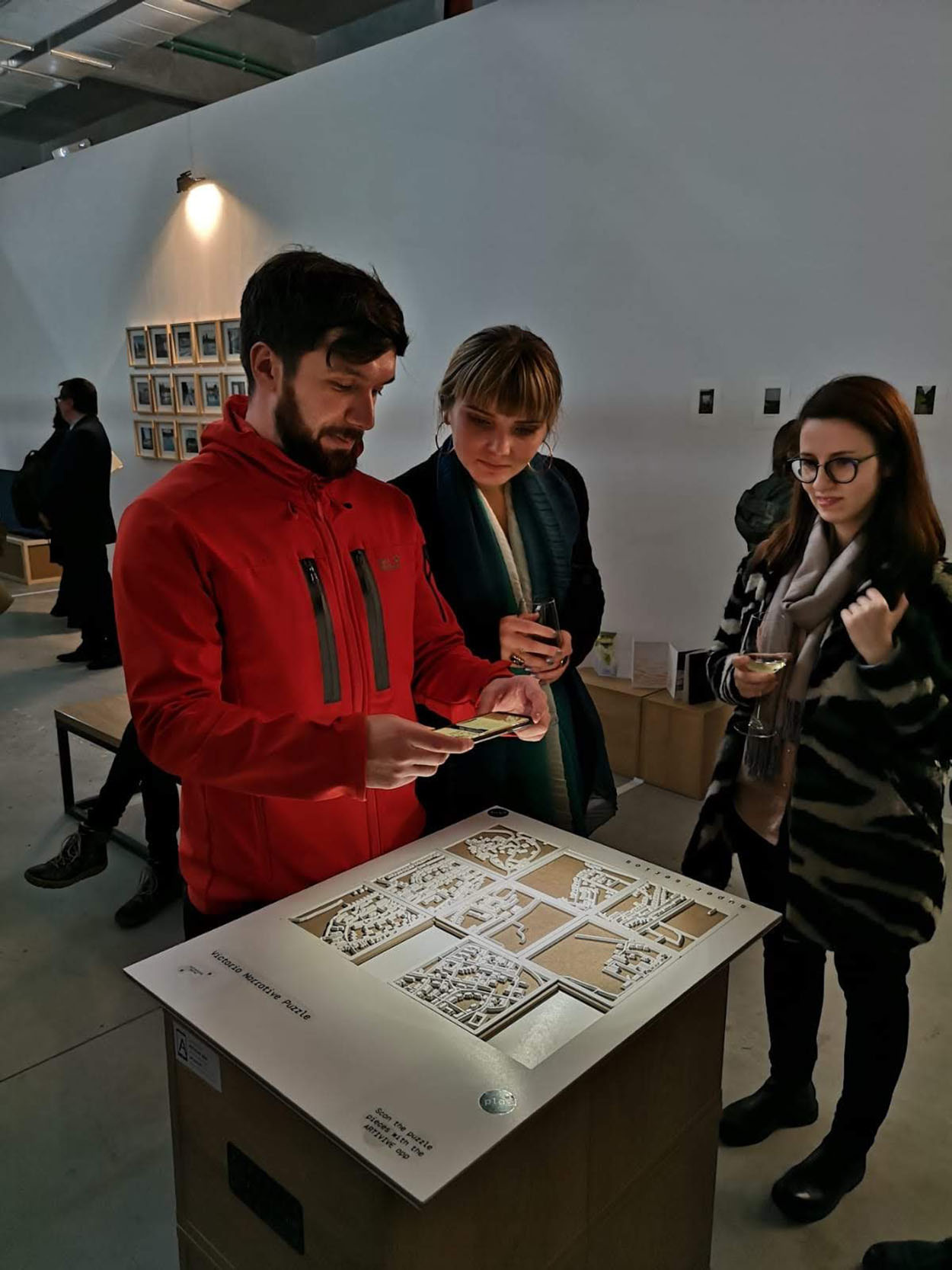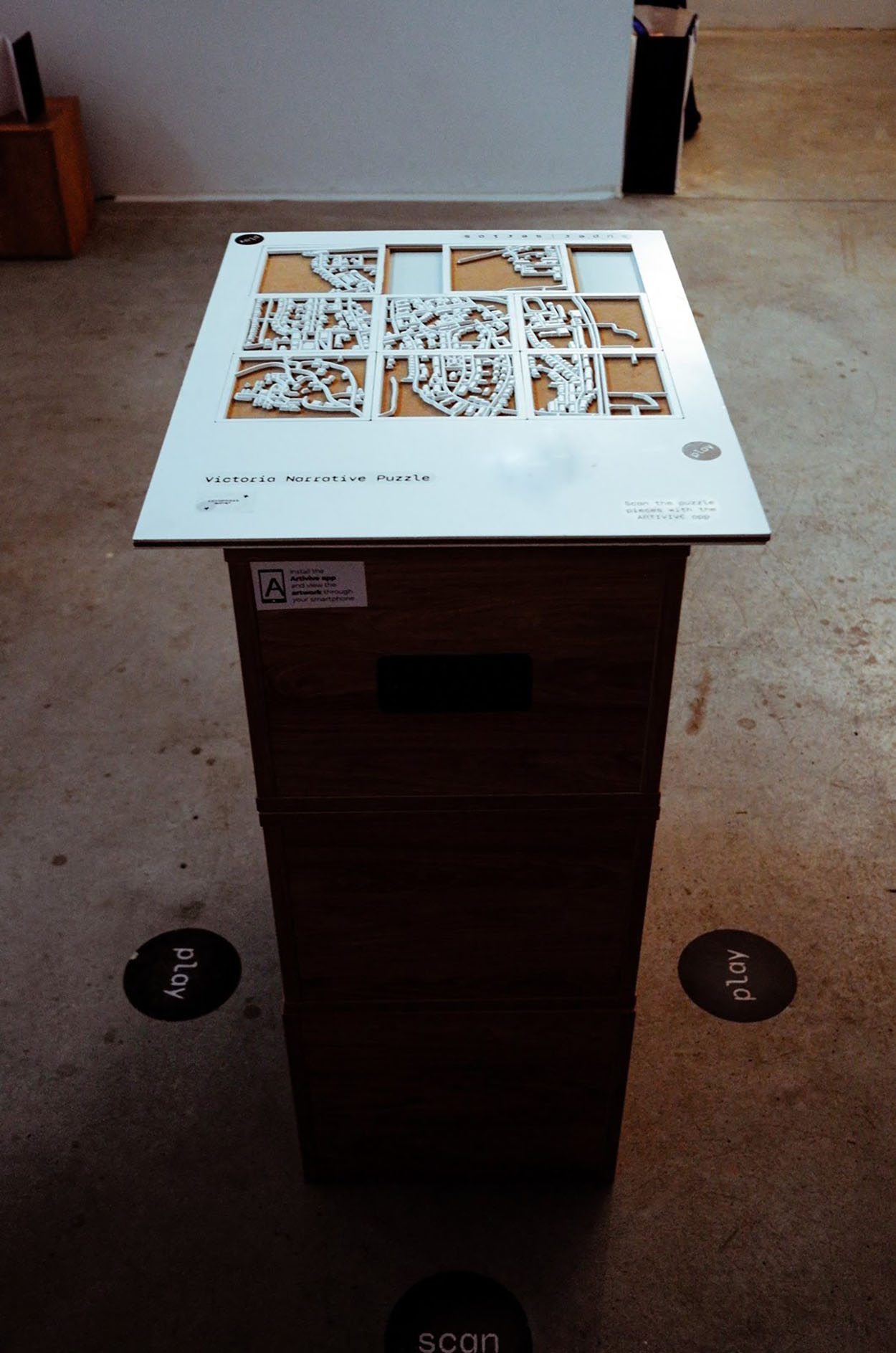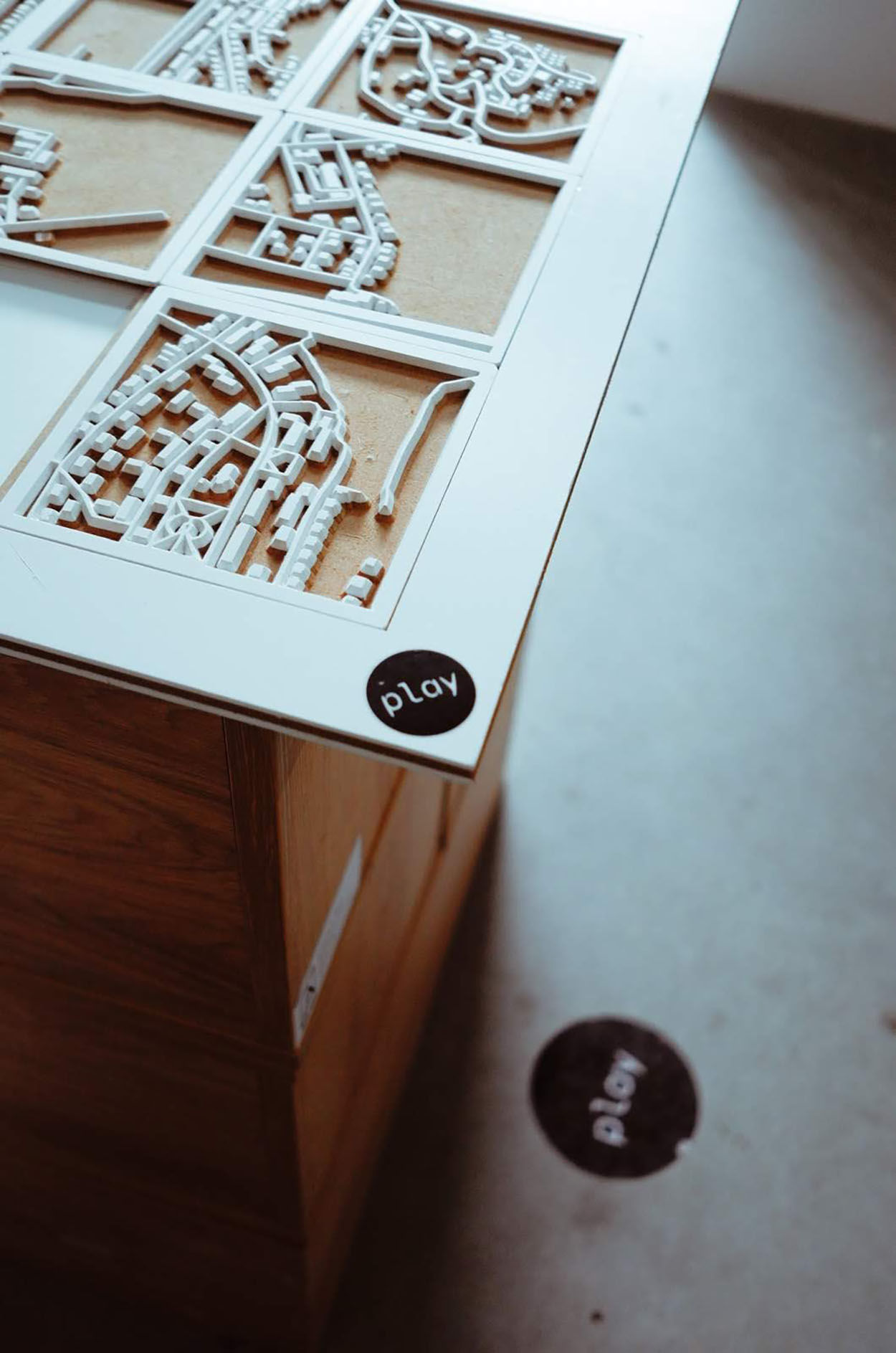*build your own Victoria and other hacks
**understanding the city, participatory practices and (not so serious) games
During the Victoria Summer workshop, we became interested in how the local community and we as visitors understand the city. Do we perceive it similarly and if not, which are the differences. Following these questions, we came to explore how we all create our virtual image and story of territory.
We set to develop a game in the form of a puzzle, recreating Victoria from its perceptions. With the help of our summer school colleagues, Silviu, Sukanya, Audrey and Sophia, we gathered images and stories from different parts of the city. Then we took the map and divided it into smaller pieces that could be reassembled by the players. These pieces each have their corresponding images and stories. Therefore, each time the map is reassembled, the narrative also gets reassembled. For each and every player of our puzzle, it results in a unique Victoria. This process of rearranging the city is similar to exploring a city without directions from anyone. As you walk through the city, you create your own version of the territory from everything you experience in this exploration.
The game’s concept of reading, interpreting and rearranging the territory is based on a combination of theories. On one side, we have Bernard Caches understanding of the image of territory and on the other site Lev Kuleshov’s ideas about montage. We used the latter to develop our framework of reassembly within the game. The hierarchy between the city centre and the periphery is challenged with the rearrangements made by each new player.





*build your own Victoria and other hacks
**understanding the city, participatory practices and (not so serious) games
During the Victoria Summer workshop, we became interested in how the local community and we as visitors understand the city. Do we perceive it similarly and if not, which are the differences. Following these questions, we came to explore how we all create our virtual image and story of territory.
We set to develop a game in the form of a puzzle, recreating Victoria from its perceptions. With the help of our summer school colleagues, Silviu, Sukanya, Audrey and Sophia, we gathered images and stories from different parts of the city. Then we took the map and divided it into smaller pieces that could be reassembled by the players. These pieces each have their corresponding images and stories. Therefore, each time the map is reassembled, the narrative also gets reassembled. For each and every player of our puzzle, it results in a unique Victoria. This process of rearranging the city is similar to exploring a city without directions from anyone. As you walk through the city, you create your own version of the territory from everything you experience in this exploration.
The game’s concept of reading, interpreting and rearranging the territory is based on a combination of theories. On one side, we have Bernard Caches understanding of the image of territory and on the other site Lev Kuleshov’s ideas about montage. We used the latter to develop our framework of reassembly within the game. The hierarchy between the city centre and the periphery is challenged with the rearrangements made by each new player.
